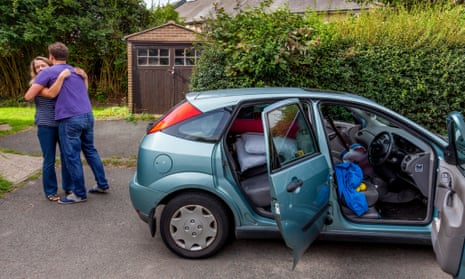Bernie Egan’s* 18-year-old foster daughter has been “part of the family” ever since she arrived as a neglected nine-year-old weighing four stone. In the past, she would have been expected to leave foster care when she turned 18. However, as a result of the government’s Staying Put legislation, which came into force in 2014, she can now remain until she is 21.
Newly published figures from the Department of Education (DfE) show that, under Staying Put, 25% of young people have remained with their foster carers. This has been broadly welcomed as a good start; while there are no figures from before the legislation, one estimate puts it at only 5%.
Fostering charities have campaigned for a Staying Put policy for years, and similar policies have now been enacted throughout the UK. The policy recognises that most 18-year-olds, particularly if they have a troubled background, are not ready for independent living. Evidence from a pilot study suggests that outcomes are better for those who remain with their foster carer.
We don’t yet know why 75% of young people still move out at 18. It may be that some simply don’t want to remain with their foster carers, particularly if they have come into care in their mid-to-late teens. Sue Lowndes, head of adoption and fostering at Hertfordshire county council, says: “If those young people have only relatively recently come into care, 18 months before or three years before, they’re less likely to have established a strong tie or attachment to the family in which they’re living”.
We do know, however, that finance for the scheme has been a bone of contention. Most regard the £44m provided by the government to support local authorities with implementation over the first three years as inadequate.
Under Staying Put, the young person, even if fostered through an agency, becomes the responsibility of the local authority, which pays the carer a weekly sum. This is usually about half of what the carer received before the child turned 18. Because the young person will now either be receiving a wage, bursary or state benefits (including housing benefit), they will be expected to contribute towards rent and keep.
Egan’s previous weekly income for her foster daughter (who calls her “mum”) was £429, consisting of a £214 fostering fee and £215 maintenance; this has now dropped to £120. She receives as an additional £40 to pay for two hours support designed to help her daughter move to independent living. Her daughter, now in full-time work, is contributing to her keep, but Egan is putting the money aside for her to use when she does move out. Andy Elvin, chief executive of the Adolescent and Children’s Trust, says: “They [the government] are, without perhaps meaning to, placing an additional burden on foster carers while reducing their income, which is never going to be popular.”
Kevin Williams, chief executive of the Fostering Network, believes that expecting young people to make a substantial contribution to their care once they reach 18 is counter-productive. He says the amount they have to contribute if they are in work is “much more than most parents would expect from a young person at the age of 18. So there’s a real disincentive for young people to remain in employment.”
There have been tensions between local authorities and fostering agencies in interpreting the government guidelines. Brenda Farrell, head of fostering and adoption at Barnardo’s, says some local authorities insist that foster carers, to continue fostering under Staying Put, must register with the authority rather than with their current foster agency. This is cheaper and more manageable for the local authority, but agencies are unhappy.
Susanna Daus, placements operational manager at Islington council, welcomes the legislation, while acknowledging that it creates additional pressure on a stretched service: “We’ve got a nice group of foster carers who do foster teenagers, but if they take a 16-year-old, that might be another four years before they have a vacancy.”
Islington, like many other local authorities, is using the period between the age of 18 and 21 to help young people into work or education, smoothing the transition to independent living. A fifth of the authority’s 18-year-olds in foster care go on to university. “We want all our children to have good careers so they can enjoy their adult lives, so there’s been a really big push from our leaving care team to really help young people on whatever career ladder they want,” says Daus.
There is, however, much more that can be done. Elvin believes that care leavers should be given priority by housing associations and apprenticeship schemes, while Farrell would like to see young people for whom independent living doesn’t work out being given the opportunity to return to their foster homes up to the age of 25. Both argue that Staying Put should be extended to children in residential care.
It’s a policy that has the potential to transform outcomes for young people in care to the ultimate benefit of society as a whole, but without rethinking implementation, says Elvin, the government risks “souring a good policy in the minds of the people we really need – the foster carers”.
* Name has been changed







Comments (…)
Sign in or create your Guardian account to join the discussion